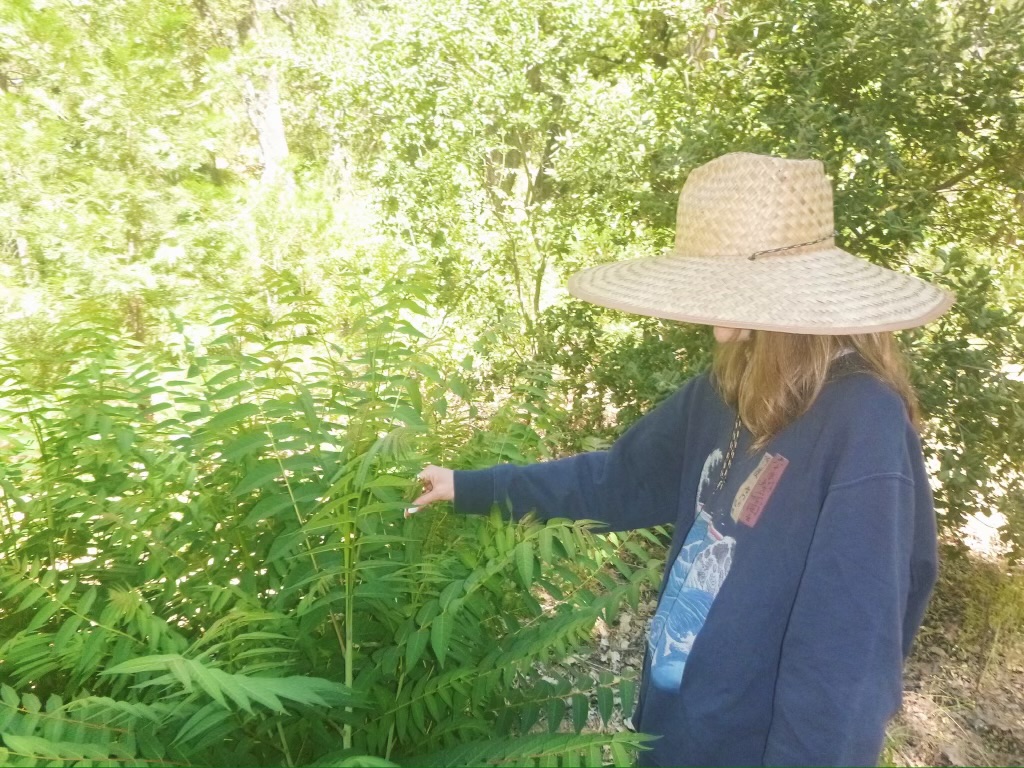
Time Well Spent on the Mountain: Layla Khazeni
Time Well Spent on the Mountain
by Layla Khazeni, Volcan Mountain Foundation volunteer currently pursuing a postgraduate degree in geography at University College London.
When I began lending a hand at the Volcan Mountain Foundation in April, I wasn’t even sure how to properly hold a machete. I had been involved with invasive species research at the end of college, but only through the remotely conducted methods of mapping and modeling population dynamics. Everything I knew about these problematic populations and their management was learned through reading alone.
I will never forget my first walk through the VMF's Volcan Mountain Nature Center off of Farmer Road, following Eric Jones and Bryan Tran through a patchy amalgam of oak groves, riparian wetlands, and vestiges of Copper Spur Ranch. We stopped by a dilapidated barn, remaining for the sake of the tree growing through its center and the big-eared bat colony sheltered within. Eric presented us with four recognizable tenets of Tree of Heaven: that their leaves are almost fluorescent, a shade of green brighter than any other plant on the property; that they grow rapidly from seeds or shallow, lateral offshoots; that they thrive in disturbed soil where other foliage cannot take root; and that they release antagonistic chemicals to inhibit the growth of neighboring, native plants by a process known as allelopathy.
As he shared these facts, he pointed them out on the plant itself. We saw the lime-like green of the leaves, how many grew, alone, in upturned soil behind the bat-barn, and the L-shaped structure of one I uprooted. I brought my fingers from the leaves to my nose and recoiled at the pungent, peppery scent. It was strong, and new, and familiar in a way I couldn’t quite place.
Over the next few weeks, Bryan and I spent Friday or Saturday mornings clearing the lower section of the property of these plants that offer nothing back to the ecosystem they infest. We were determined and machete-happy, whether we were crawling up the banks of a tributary to Santa Ysabel Creek or ankle-deep in the loose dirt behind the barn. I became well-acquainted with the scent left on my gloves, blade, and clothes after hours of wrangling with the species––but I was still helpless in identifying what the smell reminded me of.
Later, Janice led a foraging workshop where we crafted scrubs, soaps, and salts for a full spa day. One of the attendees, Pele, a teenager more inspired by and knowledgeable about nature than most adults I’d met before volunteering with VMF, joined me on a walk to the bat-barn while the soaps cured. Along the path where I had removed all signs of Tree of Heaven only a week before, sprouts stood almost a foot tall. I pulled one out and offered the leaf-end to Pele, who took one whiff and said: smells like ants!
I was immediately transported back to some of my earliest memories in Julian, sitting between lichen-coated rock formations in the apple orchard while black and red ants crawled up and over my feet. The fog of distant memory clouding this olfactory connection cleared as soon as Pele mentioned it. This specific sensory experience brought me immense joy and satisfaction—-as well as more questions, which eventually led me to look closely at the overlap between certain ant pheromones and the oil constituents of Tree of Heaven leaves. Carpenter ants store volatile compounds from green leaves as aldehydes in their glands, and these same chemicals are associated with Tree of Heaven’s smell: a smell that now reminds me of time well spent on the mountain.
For more information, visit volcanmt.org
